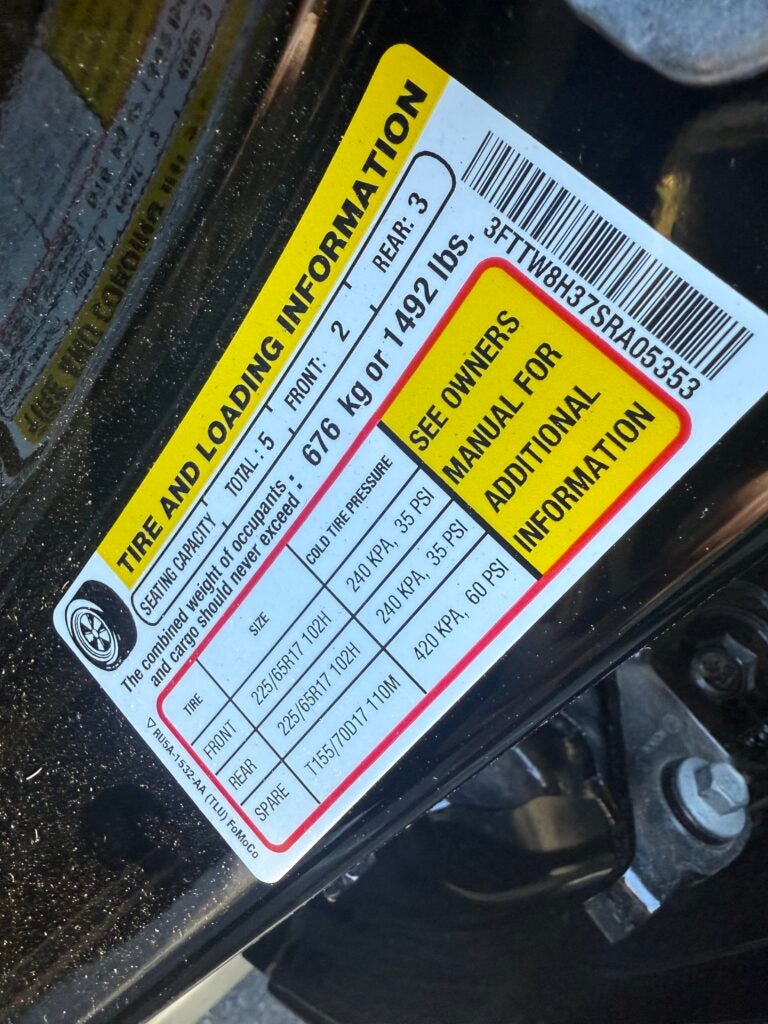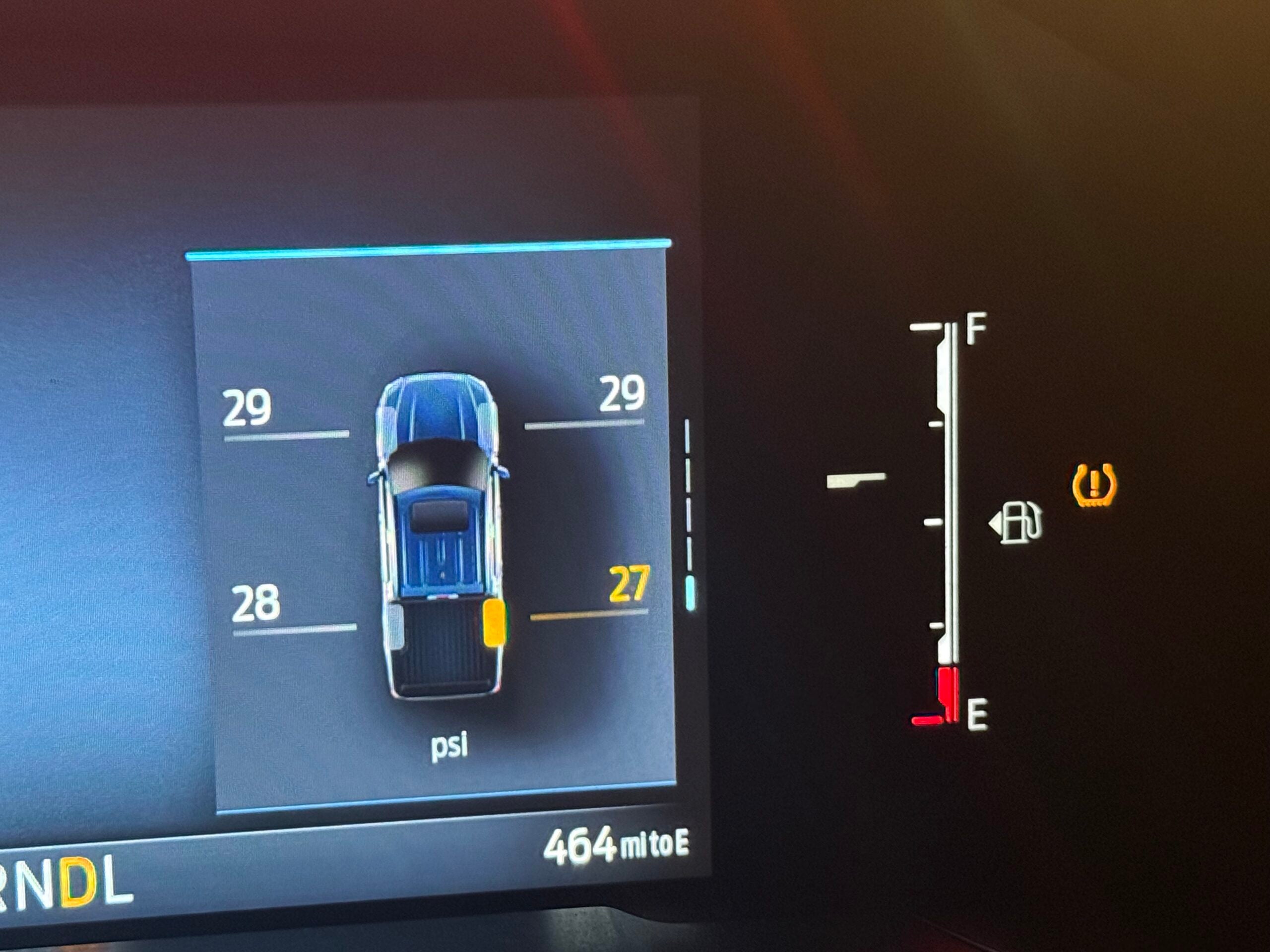Late October brings many things to our area. Pumpkin spiced coffee, longer sleeves, jack-o-lanterns, and even Christmas decorations are being sold at local stores. The drop in temperature is always a welcome reprieve from the brutal summer heat as well. As an automotive technician, it also brings some slight annoyance.
Tire pressure warnings on the dash.
Earlier this week I was driving my Ford Maverick to work at my usual 5:30 in the morning time. The temperature was a cool 48 degrees, much colder than the previous days. Suddenly my podcast was interrupted with a “ding” and a warning message flashed across the information screen. My tire pressure was low enough to trigger the warning system.
I looked at the display to see that my right rear tire was showing a saggy 28 psi, and the others were around the same. Grateful that I didn’t have a flat, I finished my journey to work as I was only a mile or two away.

Unlike most of the American driving public, I routinely check my tire pressure. Just two weeks ago I did just that, along with all the other fluids before a long trip to the North Georgia mountains. So how did I lose that much pressure in such little time?
Blame it on the weather! Tire pressure and temperature are best friends due to physics, a topic that routinely comes into play with the automotive field. Due to the cool weather, the pressure had dropped below the safe threshold of operation, leading to the truck calling out my shame. The problem was easily resolved by filling the tires to the correct pressure when I got to the shop.
A tire pressure monitoring system, or TPMS, is mandatory for all new passenger cars and light trucks sold in the United States as of Sept. 1, 2007, due to the TREAD Act of 2000. The mandate requires the system to warn drivers when one or more tires are 25% or more below the manufacturer’s recommended cold inflation pressure.
The TPMS can be divided into two types of systems. Indirect systems monitor the wheel speed of each wheel. When a tire loses pressure, it also loses diameter, making it roll at a faster speed than a properly inflated tire. Using a wheel speed sensor which is already used for anti-lock braking and traction control can spot a wheel that is low. These systems do not use a tire pressure sensor mounted inside the wheel and tire. The system is reliable, but not accurate. These systems also do not monitor the spare tire. Indirect systems are normally found in older cars that first had TPMS technology.
Direct systems have a sensor in each tire that reports back to an antenna mounted in the fender. These sensors have an internal lithium battery and must be replaced every 5 to 10 years, normally when the tires are replaced. They report back to the car the exact pressure, mounting position, and temperature of the tire, which lets the driver know when there is an issue. Most direct sensors monitor the spare tire as well which if you have ever put a spare flat tire on, is useful.
No matter what system you have, or even if you have an older vehicle without a TPMS at all, the remedy to the “October surprise” low tire pressure is checking your pressure when the temperatures drop. Be sure to check the driver’s door jamb or the owner’s manual for the specified pressure. If you need help, many shops will even do it for you for free. While the warning might be an annoyance, it should not be ignored, even if it goes away later in the day.
Outside of low pressure being harmful for your tires and overall safety, a 1 PSI drop of tire pressure can decrease fuel economy by 0.2% due to an increase in rolling resistance. While that doesn’t seem like a lot, it adds up.
As for me, I will see you on the road!










